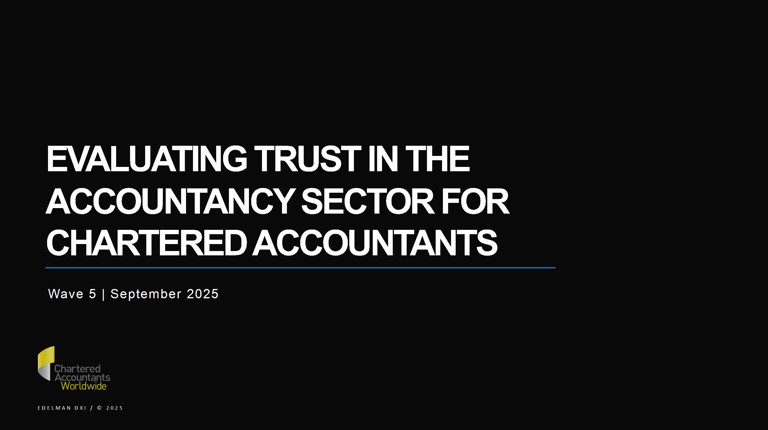Financial Instruments (FRS 32, FRS 39, FRS 107 & FRS 109)
In July 2014, IASB completed the final phase on impairment for IFRS 9 Financial Instruments, with the previous phases on classification and measurement, and hedging issued in earlier years. Singapore’s equivalent, FRS 109 Financial Instruments was issued on 11 December 2014.
FRS 109 is effective for annual periods beginning on or after 1 January 2018 and will replace FRS 39 Financial Instruments: Recognition and Measurement.
Under FRS 109, there is no available-for-sale (AFS) classification. An investment in equity instruments would be classified under fair value through profit or loss (FVTPL) unless the entity makes an irrevocable election at initial recognition to present subsequent changes in fair value in other comprehensive income (OCI).
The fair value through other comprehensive income (FVOCI) classification under FRS 109 paragraph 4.1.2A may appear similar to the AFS classification but they are different because unlike FRS 39, FRS 109 requires an examination of an entity’s business model for managing the financial asset, and the contractual cash flow characteristics of the financial asset before concluding on the classification. An investment in equity instruments would not qualify for FVOCI classification because it would fail the requirement for the instrument’s cash flows to be solely payments of principal and interest.
In the event that the entity makes an irrevocable election at initial recognition to present subsequent changes in fair value in OCI in accordance with FRS 109 paragraph 4.1.4, it is important to be aware that upon de-recognition of the equity instrument, cumulative gains or losses previously recognised in OCI are not permitted to be reclassified to profit or loss.
FRS 109 also does not have the exception in FRS 39 that allows subsequent measurement of investments in equity instruments to be at cost when they do not have a quoted price in an active market and whose fair value cannot be reliably measured. Under FRS 109, all equity instruments are to be subsequently measured at fair value.
Lastly, equity investments are not required to be assessed for impairment under FRS 109. This is a notable change from the requirements under FRS 39 whereby a significant or prolonged decline in fair value of an investment in an equity instrument below its cost is an objective evidence of impairment.
Publication Date: 30 December 2016
Written by: Lim Ju May, Corporate Reporting and Ethics (CoRE)
Under FRS 109, investments in quoted debt securities will be classified and measured under amortised cost, fair value through other comprehensive income (FVOCI) or fair value through profit or loss (FVTPL), depending on the entity’s business model for managing the financial assets and the contractual cash flow characteristics of the financial asset.
Classification of financial assets under FRS 109 requires an entity to first determine its business model for managing its financial assets unless paragraph 4.1.5 of FRS 109 applies (see below for details). An entity’s business model is determined at a level that reflects how groups of financial assets are managed together to achieve a particular business objective. It does not depend on management’s intention for an individual instrument. An entity’s business model refers to how an entity manages its financial assets in order to generate cash i.e. whether cash flows will result from collecting contractual cash flows, selling financial assets or both.
FRS 109 stipulates two types of business models – business model whose objective is to hold financial assets to collect contractual cash flows (let’s call this “BM Hold”); and business model whose objective is achieved by both collecting contractual cash flows and selling financial assets (let’s call this “BM Hold & Sell”). Financial assets that do not fall into either of these two business models will be classified and measured under FVTPL. One example of a business model that results in classification under FVTPL is one in which an entity manages the financial assets with the objective of realising cash flows through the sales of the assets. Decisions are based on the assets’ fair values and typically results in active buying and selling. Notwithstanding that the entity collects contractual cash flows while it holds the financial assets, the objective of such a business model is not achieved by both collecting contractual cash flows and selling financial assets. The collection of contractual cash flows is not integral to achieving the business model’s objective.
If the quoted debt security falls under either BM Hold or BM Hold & Sell, the entity needs to proceed to determine whether the asset’s contractual cash flows meet the SPPI criterion i.e. the asset’s contractual cash flows are solely payments of principal and interest on the principal amount outstanding. Quoted debt securities that are plain vanilla bonds would meet the SPPI criterion. Quoted debt security that is convertible into a fixed number of equity instruments of the issuer would not meet the SPPI criterion because the contractual cash flows reflect a return that is inconsistent with a basic lending arrangement.
A quoted debt security shall be classified as being subsequently measured at amortised cost if it is held under the BM Hold and meets the SPPI criterion.
A quoted debt security shall be classified as being subsequently measured at FVOCI if it is held under the BM Hold & Sell and meets the SPPI criterion.
Notwithstanding the above amortised cost or FVOCI classification, an entity may at initial recognition choose the FVTPL classification option under paragraph 4.1.5 of FRS 109 if measuring the asset at FVTPL would eliminate or reduce an accounting mismatch.
Under FRS 39, investments in quoted debt securities which are not held for trading can be designated as available-for-sale (AFS). Unlike FRS 39 whereby the AFS classification is generally an unrestricted option, the FVOCI classification is not a residual category.
The concept of tainting for Held-to-Maturity (HTM) investments under FRS 39 does not exist under FRS 109. Should the entity change its business model over time, it will classify newly originated or newly purchased financial assets under the new business model. The entity will keep the classification of existing assets under the old business model.
Publication Date: 30 December 2016
Written by: Lim Ju May, Corporate Reporting and Ethics (CoRE)
FRS 109 introduces a new expected credit loss model whereby an entity shall measure the loss allowance for a financial instrument at an amount equal to either the lifetime expected credit losses or 12-month expected credit losses, depending on whether the credit risk on that financial instrument has increased significantly since initial recognition. A simplified approach is available for trade receivables, contract assets and lease receivables, allowing or requiring the recognition of lifetime expected credit losses at all times.
Loss allowance is defined as the allowance for expected credit losses on financial assets measured at amortised cost, lease receivables and contract assets; the accumulated impairment amount for financial assets measured at fair value though other comprehensive income (FVOCI) and the provision for expected credit losses on loan commitments and financial guarantee contracts.
In developing a model that depicts expected credit losses, the IASB observed that when an entity prices a financial instrument, part of the yield, the credit risk premium, compensates the entity for the credit losses initially expected. Consequently notwithstanding that a financial instrument has a high credit risk at initial recognition, no economic loss is suffered because those expected credit losses are already implicit in the initial pricing of the instrument. For most financial instruments, the pricing is not adjusted for subsequent changes in expected credit losses. Consequently subsequent changes in expected credit losses are economic losses (or gains) of the entity in the period in which they occur.
The new expected credit loss model is a forward looking impairment model designed to depict expected credit losses. Accordingly, a loss event no longer needs to occur before an impairment loss is recognised, and this should result in more realistic recognition of impairments. This is a major shift from the incurred loss model under FRS 39 whereby impairment losses are recognised only if there is objective evidence of impairment as a result of the occurrence of a loss event(s) after the initial recognition of the asset. FRS 39 prohibits the recognition of losses expected as a result of future events, no matter how likely they are to happen. This often results in impairment being too little too late.
FRS 39’s incurred credit loss model requires there to be objective evidence of impairment before a financial asset can be impaired. If such evidence exists, FRS 39 requires different impairment loss measurement depending on whether the financial asset is carried at amortised cost, carried at cost or for available-for-sale (AFS) financial assets. For AFS debt instruments, impairment is measured as the difference between the acquisition cost and the current fair value. This approach has been criticised because once an impairment trigger occurs, the impairment has to be recognised based on changes in fair value even though the fair value changes would be impacted by variables other than credit risk (eg changes in interest rates). Accordingly, under FRS 109, financial assets classified under FVOCI and financial assets classified as at amortised cost are subject to the same single impairment model.
Lastly, because the financial asset measured at FVOCI will be subject to the same impairment model as those measured under amortised cost, the profit or loss treatment for FVOCI (although measured at fair value) will be the same as for an amortised cost asset. The difference between the amortised cost and fair value is recorded in OCI until the asset is derecognised.
Publication Date: 30 December 2016
Written by: Lim Ju May, Corporate Reporting and Ethics (CoRE)
Paragraph 11(a) of FRS 32 Financial Instruments: Presentation defines a financial asset as any asset that is cash. Hence, cash held by any entity should be considered as a financial asset. Although the entity is in the business of money changing and cash is held for sale in the ordinary course of business, paragraph 2 of FRS 2 Inventories specifically excludes financial instruments from applying FRS 2.
Hence, cash held by an entity should be accounted for as a financial asset as “Cash” under FRS 109 Financial Instruments and any related disclosures should be made in accordance with FRS 107 Financial Instruments: Disclosures.
It should also be noted that FRS 21 The Effects of Changes in Foreign Exchange Rates requires the translation of foreign currency monetary items using the closing rate at the end of each reporting period. This applies to the “Cash” that is denominated in foreign currencies.
Publication Date: 29 December 2017
Written by: Felicia Tay & Lim Ju May, Corporate Reporting and Ethics (CoRE)
|
A. What is the SPPI test?
SPPI refers to solely payments of principal and interest on the principal amount outstanding.
Paragraph 4.1.1 of SFRS(I) 9 requires an entity to classify financial assets as subsequently measured at amortised cost, fair value through other comprehensive income or fair value through profit or loss on the basis of both:
(a) the entity’s business model for managing the financial assets and
(b) the contractual cash flow characteristics of the financial asset.
The second item, (b) is also known as the SPPI assessment. The SPPI assessment or SPPI test is performed on a financial asset to determine whether the contractual cash flow characteristics of that financial asset are solely payments of principal and interest on the principal amount outstanding.
B. Why is the SPPI test important?
Failing the SPPI test would require a financial asset to be classified as subsequently measured at fair value through profit or loss. This means that the financial asset shall be measured at fair value at every reporting date with the changes in fair value taken to the income statement.
Passing the SPPI test would result in the financial asset being classified as subsequently measured at amortised cost or at fair value through other comprehensive income, depending on whether the entity’s business model for managing the financial asset is “to hold financial assets in order to collect contractual cash flows” or “both collecting contractual cash flows and selling financial assets” (unless otherwise designated to be at fair value through profit or loss).
C. What is “solely payments of principal and interest on the principal amount outstanding”?
For the purpose of the SPPI assessment:
Principal – Paragraph 4.1.3(a) of SFRS(I) 9 states that “principal is the fair value of the financial asset at initial recognition”.
Interest – Paragraph 4.1.3(b) of SFRS(I) 9 states that “interest consists of consideration for the time value of money, for the credit risk associated with the principal amount outstanding during a particular period of time and for other basic lending risks and costs, as well as a profit margin…”
A financial asset with contractual cash flows that are in line with the above definitions of “principal’ and “interest” is consistent with a basic lending arrangement.
Paragraph B4.1.7A of SFRS(I) 9 clarifies that in a basic lending arrangement, consideration for the time value of money and credit risk are typically the most significant elements of interest. However, contractual terms that introduce exposure to risks or volatility in the contractual cash flows that is unrelated to a basic lending arrangement, such as exposure to changes in equity prices or commodity prices, do not give rise to contractual cash flows that are solely payments of principal and interest on the principal amount outstanding.
D. Consideration for the time value of money
What is time value of money?
As defined in paragraph B4.1.9A of SFRS(I) 9, “Time value of money is the element of interest that provides consideration for only the passage of time. That is, the time value of money element does not provide consideration for other risks or costs associated with holding the financial asset. In order to assess whether the element provides consideration for only the passage of time, an entity applies judgement and considers relevant factors such as the currency in which the financial asset is denominated and the period for which the interest rate is set”.
What is modified time value of money?
BC4.177 of SFRS(I) 9 states that “as a general proposition, there must be a link between the interest rate and the period for which the interest rate is set, because the appropriate rate for an instrument varies depending on the term for which the rate is set”.
Paragraph B4.1.9B of SFRS(I) 9 provides examples of instruments where the time value of money is modified. One example is when a financial asset’s interest rate is “periodically reset but the frequency of that reset does not match the tenor of the interest rate (for example, the interest rate resets every month to a one-year rate)”. Another example is when a financial asset’s interest rate is “periodically reset to an average of particular short-term and long-term interest rates”.
What is the implication of modified time value of money?
Paragraph B4.1.9B of SFRS(I) 9 requires an entity to assess the modification to determine whether the contractual cash flows represent solely payments of principal and interest on the principal amount outstanding.
How is the modification assessed?
To perform the modification assessment, paragraph B4.1.9C of SFRS(I) 9 requires the entity to compare (a) the contractual cash flows of the financial asset whose time value of money is modified to (b) the cash flows of a benchmark financial asset whose time value of money is not modified (“benchmark cash flows” / “benchmark cash flows test”).
In making the comparison, the entity must consider the following:
- the effect of the modified time value of money element in each reporting period and cumulatively over the life of that financial asset [paragraph B4.1.9D of SFRS(I) 9];
- factors that could affect future contractual cash flows under only reasonably possible scenarios instead of every possible scenario [paragraph B4.1.9D of SFRS(I) 9].
If it is clear with little or no analysis that the undiscounted contractual cash flows under assessment could (or could not) be significantly different from the undiscounted benchmark cash flows, an entity need not perform a detailed assessment [paragraph B4.1.9C of SFRS(I) 9].
In the absence of a ‘bright-line’ in SFRS(I) 9 on what is considered to be ‘significantly different undiscounted cash flows’, entities are required to exercise judgement in determining the appropriate thresholds to be used.
E. Contractual terms that change the timing or amount of contractual cash flows
The contract of a financial asset would stipulate its contractual terms which determine that financial asset’s cash flows. Examples of such contractual terms include the interest rate and maturity date. The cash flows arising from these contractual terms would be the contractual cash flows of the financial asset.
For some financial assets, there could be additional contractual terms that would change the timing or amount of the contractual cash flows. For example, if the asset can be prepaid before maturity or its term can be extended.
Is the SPPI test affected by the additional contractual terms?
Notwithstanding that the contractual cash flows of a financial asset pass the SPPI test, there is a possibility that an additional contractual term would cause the financial asset to fail the SPPI test.
Paragraph B4.1.10 of SFRS(I) 9 requires the entity to determine whether the contractual cash flows that could arise over the life of the instrument due to that additional contractual term are solely payments of principal and interest on the principal amount outstanding.
To make this determination, the entity must assess the contractual cash flows that could arise both before, and after, the change in contractual cash flows. The entity may also need to assess the nature of any contingent event (i.e. the trigger) that could change the timing or amount of the contractual cash flows.
Publication Date: 15 February 2019
Written by: Felicia Tay & Lim Ju May, Corporate Reporting and Ethics (CoRE)
Note:
|
One of the elements of interest is consideration for the time value of money. In some cases, the time value of money element may be modified or imperfect. An example of this is cited in paragraph B4.1.9B of SFRS(I) 9 – where a financial asset’s interest rate is periodically reset but the frequency of that reset does not match the tenor of the interest rate. Part D of Tech Bite 5A provides further clarifications on consideration for the time value of money.
What does the above mean?
In Singapore, a common example of a financial asset whose interest rate is periodically reset but the frequency of that reset does not match the tenor of the interest rate, is the Fixed Deposit Home Rate (FDHR) loans. FDHR loans, first introduced in 2014, are home loans provided by financial institutions to retail customers, whose interest rates are pegged to the prevailing Singapore dollar fixed deposit interest rate.
An example of a home loan floating rate package1 for a 30-year loan is as follows:
Interest rate | |
Year 1 and 2 | Singapore Dollar Fixed Deposit Rate* + Fixed spread A** |
Year 3 and thereafter | Singapore Dollar Fixed Deposit Rate* + Fixed spread B** |
* The Singapore Dollar Fixed Deposit Rate refers to for example, the prevailing 8 months Singapore Dollar fixed deposit interest rate of that financial institution (say x%) which is revised by the financial institution on a monthly basis.
** Fixed Spread refers to the additional element added to the fixed deposit rate and is determined by that financial institution (say y% for year 1 and 2, and z% thereafter).
As the interest rate of the above home loan is being revised every month to the new prevailing 8-month Singapore Dollar fixed deposit interest rate in the above example, the time value of money element is modified. This is because the interest period (i.e. 1-month repricing period) does not match the tenor of the of the interest rate (i.e. 8-month interest rate).
The holder of the financial asset must assess the contractual cash flows against those of an instrument (also known as the benchmark instrument) that is identical in all respects except that the tenor of the interest rate matches the interest period. In some cases, the determination can be made through a qualitative assessment. In other cases, it may be necessary to perform a quantitative assessment (commonly known as the benchmark test).
SFRS(I) 9 requires the entity to consider only reasonably possible scenarios to assess that the cash flows arising from the instrument being assessed (in this case, the FDHR loan) is not significantly different from the benchmark instrument. As SFRS(I) 9 does not prescribe a single way of performing the benchmark test, different methods might be appropriate. Judgement will therefore be required, and the approach adopted should be applied consistently.
Part D of Tech Bite 5A “How is the modification assessed?”stipulates other factors that the entity must consider when developing the benchmark cash flows test.
[1]Note: The contractual terms of FDHR loans vary among financial institutions. Assessment of whether the time value of money is modified should be made according to the contractual terms of the financial instrument in question.
Publication Date: 15 February 2019
Written by: Felicia Tay & Lim Ju May, Corporate Reporting and Ethics (CoRE)
Note:
|
An example of a contractual term that changes the timing or amount of contractual cash flows is one that permits a debt instrument to be prepaid before maturity. Part E of Tech Bite 5A discusses that the holder of a debt instrument with such a prepayment feature in its contractual terms is required to assess whether the contractual cash flows arising from the debt instrument are solely payments of principal and interest on the principal amount outstanding.
If the prepayment amount substantially represents unpaid amounts of principal and interest on the principal amount outstanding, and which may include reasonable compensation1 for the early termination of the contract, that prepayment contractual term will result in contractual cash flows that are solely payments of principal and interest on the principal outstanding [paragraph B4.1.11(b) of SFRS(I) 9].
Issue
What should be considered to be ‘reasonable compensation’ and how should entities go about determining this?
Below are some factors which entities should consider in making the judgement.
(a) Whether the prepayment contractual term is genuine or has more than a de minimis effect on the contractual cash flows
The prepayment contractual term should be disregarded for purposes of assessing whether the contractual cash flows arising from the debt instrument are solely payments of principal and interest on the principal amount outstanding in the following situations:
- If prepayment will only occur in extremely rare or highly abnormal situations, and is very unlikely to occur (i.e. the clause is non-genuine); or
- If the compensation amount has only a ‘de minimis’ impact on the contractual cash flows of the debt instrument in each reporting period and cumulatively over the life of the debt instrument.
(b) Whether the compensation amount includes compensation for factors other than for elements of interest in a basic lending arrangement
Paragraph B4.1.7A of SFRS(I) 9 states that the following elements of interest are consistent with a basic lending arrangement:
- time value of money;
- credit risk associated with the principal amount outstanding;
- other basic lending risks (for example, liquidity risk);
- costs (for example, administrative costs) associated with holding the financial asset for a particular period of time; and
- a profit margin (i.e. interest margin) that is consistent with a basic lending arrangement.
[1]Rationale for prepayment compensation may include:
- Compensation for loss of interest over the remaining term
- Compensation for business and administrative costs and loss of future profit
- Form of deterrent for early repayment
- A profit element
Publication Date: 15 February 2019
Written by: Felicia Tay & Lim Ju May, Corporate Reporting and Ethics (CoRE)
Note:
|
In Singapore, commercial and retail customer products commonly include interest rates that reference to Singapore Dollar SIBOR or Singapore Dollar SOR (e.g. SIBOR / SOR mortgage loans). Singapore dollar SIBOR are short-term interest rates for tenors of 1 month, 3 months, 6 months and 12 months. Singapore Dollar SOR are short-term interest rates for tenors of overnight, 1 month, 3 months and 6 months.
SIBOR is clearly a Singapore dollar interest rate that does not involve any foreign currency. As the calculation methodologies1 of Singapore Dollar SOR include an element of USD interest rates and therefore an apparent foreign currency exposure, there is an issue of whether Singapore Dollar SOR products would qualify as generating contractual cash flows that are solely payments of principal and interest on the principal outstanding.
Part C of Tech Bite 5A provides clarification on “what is solely payments of principal and interest on the principal amount outstanding?”
ISCA’s SFRS(I) 9 Financial Instruments Working Group2 has deliberated over the nature of SIBOR / SOR and concluded that both SIBOR and SOR qualify as interest rates that are consistent with a basic lending arrangement. The basis for this conclusion is as follows:
a) SIBOR and SOR are commonly used as benchmark interest rates for basic lending arrangements in the Singapore banking market. In particular, in deriving the Singapore Dollar SOR, the USD currency exposure is fully eliminated by the USD/SGD FX swap.
b) The market in Singapore does not regard SIBOR / SOR loans as introducing any foreign currency risk.
c) SIBOR and SOR are considered as proxies for the time value of money in Singapore.
[1] SOR, SIBOR, Singapore Dollar Spot FX and Thai Baht Spot FX (collectively known as “ABS Benchmarks in Singapore”) are administered by the ABS Benchmarks Administration Co Pte Ltd, a wholly-owned subsidiary of the Association of Banks in Singapore (“ABS”).
According to the “Calculation Methodology for the ABS Benchmarks`” issued by the ABS, SOR and SIBOR are described as follows:
- SOR: the synthetic rate for deposits in Singapore dollars (SGD), which represents the effective cost of borrowing the SGD synthetically by borrowing the US dollars (USD) for the same maturity, and swap out the USD in return for the SGD
- SIBOR: the rate at which an individual Contributor Bank contributes the rate at which it could borrow funds, were it to do so by asking for and accepting the interbank offers in reasonable market size, just prior to 11:00 a.m. Singapore time
[2] SFRS(I) 9 Financial Instruments Working Group (“FI WG”) is a working group that is formed under ISCA’s Financial Reporting Committee (“FRC”).
Publication Date: 15 February 2019
Written by: Felicia Tay & Lim Ju May, Corporate Reporting and Ethics (CoRE)
Note:
|
Bail-in features of bank-issued debt instruments are designed to pre-empt a bank from breaching its regulatory capital requirements by permitting or requiring the regulatory authority to either write down the value of the debt instrument or to convert the debt instrument into ordinary shares of the bank.
From the perspective of the entity holding such debt instruments as financial assets, such bail-in features may cause the debt instrument to fail the SPPI test. As a result such a debt instrument would be required to be classified as subsequently measured at fair value through profit or loss unless, as allowed by SFRS(I) 9, the bail-in features arise from statutory requirements.
Paragraph B4.1.13 of SFRS(I) 9, Instrument E, provides an example in which the issuer of Instrument E is subject to legislation that permits or requires a national resolving authority to impose losses on holders of Instrument E, in particular circumstances (e.g. in the case of severe financial difficulties of the issuer). In assessing whether instrument E passes the SPPI test, payments that arise only as a result of the national resolving authority’s power to impose losses on the holders of Instrument E are not required to be considered in the SPPI assessment.
The Monetary Authority of Singapore has introduced provisions covering the bail-in regime. For bank-issued debt instruments (in Singapore) with bail-in features that are in accordance with the bail-in regime, payments that arise only as a result of the bail-in features are not considered in assessing whether the bank-issued debt instruments pass the SPPI test.
Publication Date: 15 February 2019
Written by: Felicia Tay & Lim Ju May, Corporate Reporting and Ethics (CoRE)





.png?sfvrsn=dd675fd5_2)


6a6c7fe2013f4be3b0ecc0a5930da5c9.jpg?sfvrsn=ab5334c8_0)

/business-management-global-connection/istock-1167579720-c.jpg?sfvrsn=ff93f9a5_2)
/audit-assurance/istock-1169206203-c.jpg?sfvrsn=1d6f9b25_6)


/ethics-and-professionalism/istock-1141115724-c.jpg?sfvrsn=4e54d691_2)

/audit-assurance/istock-818732836-c-v3.jpg?sfvrsn=ae44e7b7_0)

.png?sfvrsn=905ee1bd_0)
/legal-secretarial/istock-866706340-c.jpg?sfvrsn=d7f57b8c_2)